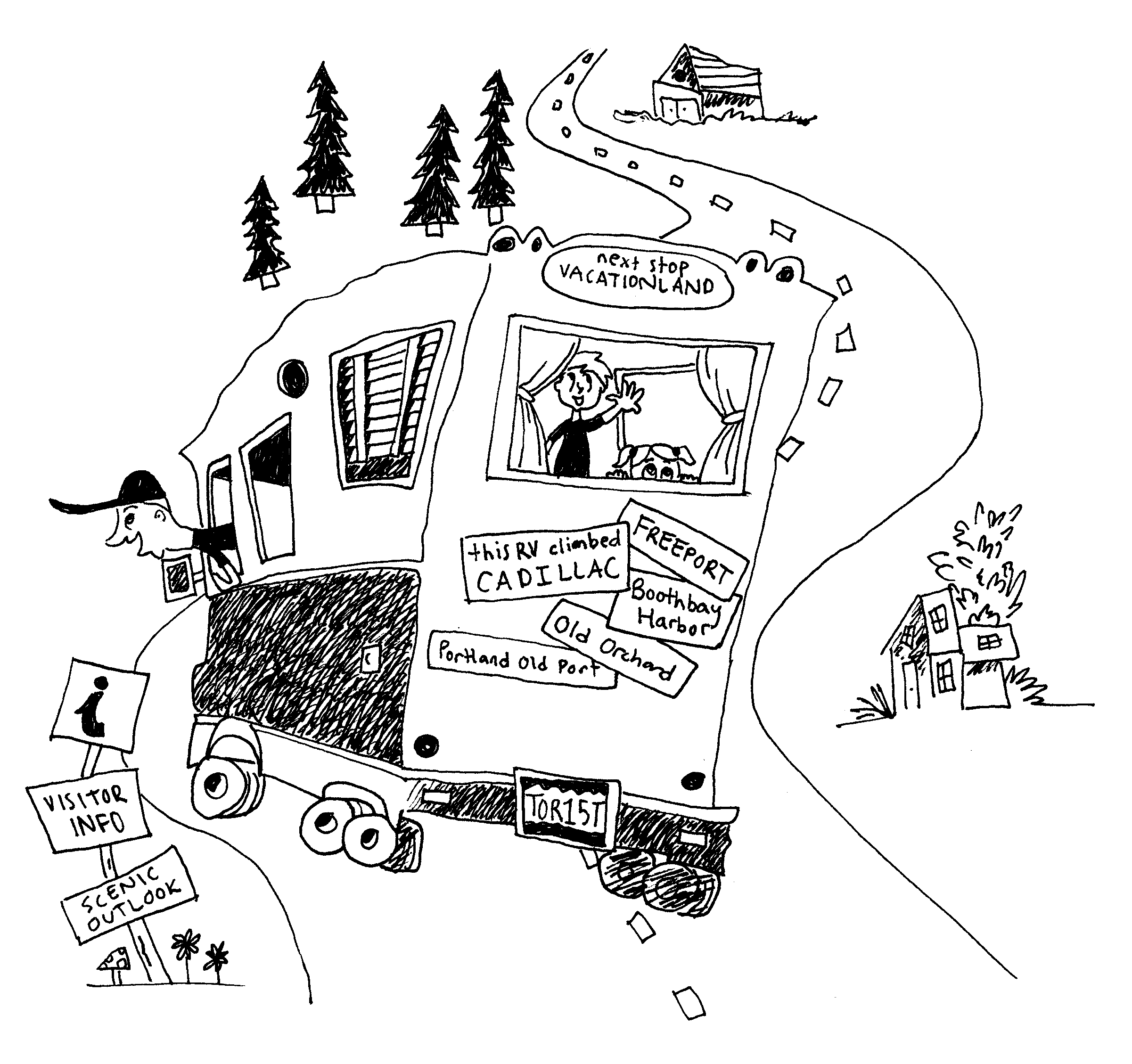Tourism in Maine: essential, but burdensome
September 21, 2018
 This
piece represents the opinion of the author
.
This
piece represents the opinion of the author
.
 Caroline Carter
Caroline CarterSeptember in Maine is a wonderful experience. The leaves begin to turn, the days get colder, the apples ripen to perfection and the harvest begins. Accompanying these seasonal changes in the environment, however, is an event that truly marks the transition to fall: the departure of most of Maine’s tourists. After Labor Day, droves of happy summer people return to their homes, and—save for a few leaf-peepers—most do not return until next May.
This is always a drastic change. Summer tourism is perhaps our most defining industry and has acquired even more importance in recent years as former pillars of the Maine economy—the paper and logging industries, for example—have decreased in importance. But while its economic benefits are undeniable, tourism exerts a considerable strain on our state’s people and its environment. It almost seems as if the state breathes a collective sigh of relief after everyone has left.
It’s exhausting to be a summer colony, after all. Tourists are mostly well-meaning, but in their scramble to Acadia National Park, Boothbay Harbor and other gems of Maine’s rugged coast, they are sure to rub some locals the wrong way. In many coastal areas, there is a tangible divide between those “from away” and the year-round residents who just want to haul their traps without being photographed or dogged by jet skis. These people welcome the business that tourists bring, but at the same time, resent them for only staying during the warmest time of the year, while they have to winterize their houses and vehicles, contend with storms and power outages and shovel the feet of snow that accumulate in their driveways once December arrives.
Perhaps an even greater disruption is caused by the sheer number of tourists. Old Orchard Beach, Portland’s Old Port and downtown Freeport are regularly mobbed by visitors and the same goes for countless other attractions in boutique towns along the coast. Route 1, which runs through most of these, is so congested with cars that it can be difficult to drive there during peak tourist season. Acadia National Park, a short detour south from the highway, is similarly filled to the brim with vacationers. This exclusive preference for certain places results in a significant concentration of tourists in just a few small areas, which stresses the capacity of local businesses and public facilities. In addition, the natural environment is burdened by the increased number of people, many of whom disturb beaches by removing rocks, walking on fragile habitats and leaving waste that is then washed into the ocean.
Maine is not alone in its popularity, however. The pristine woods and mountains of New Hampshire, Vermont and upstate New York also accommodate thousands of visitors from the Northeast Corridor, as well as similarly large numbers of Canadians. These states, too, have seen an uptick in visits. And across the world, other “wild” places are also being overrun—Iceland, in which the number of tourists visiting per year far exceeds the local population, comes to mind. Overtourism, in Maine and elsewhere, threatens the integrity of cultural and historical sites, the natural environment and the social cohesion in the areas which it plagues.
How, then, can Maine maintain its most lucrative industry while respecting the interests of year-round Mainers? As tourism numbers continue to rise, it seems that a balance must be achieved. Welcoming people from away, if only a bit reluctantly, is part of our identity as a state. But we must develop new ways to regulate tourism if it is to continue sustainably. Maybe a shift in advertising is in order. Why not promote Maine’s interior, which is often snubbed by lobster-hungry visitors? This might help to alleviate the problem of coastal crowding. And why not provide tourists with real information about the people and places they see? Why not encourage them to respect the locals and their work, instead of allowing them to exoticize it, to let it confirm their preconceived notions of Maine?
These are, of course, lofty goals. Old habits die hard, and years of postcard imagery projected to the outside world will not wear off easily. No one’s going to stop asking to hear a Downeast accent, waiting in line at Red’s Eats or crowding at the top of Cadillac Mountain anytime soon. Nonetheless, I’m confident that, with a little work, Maine can improve how it deals with its ever-growing number of tourists. For now, enjoy September while it lasts—maybe you too will come to appreciate how quiet it gets around here at this time of year.

Comments
Before submitting a comment, please review our comment policy. Some key points from the policy: